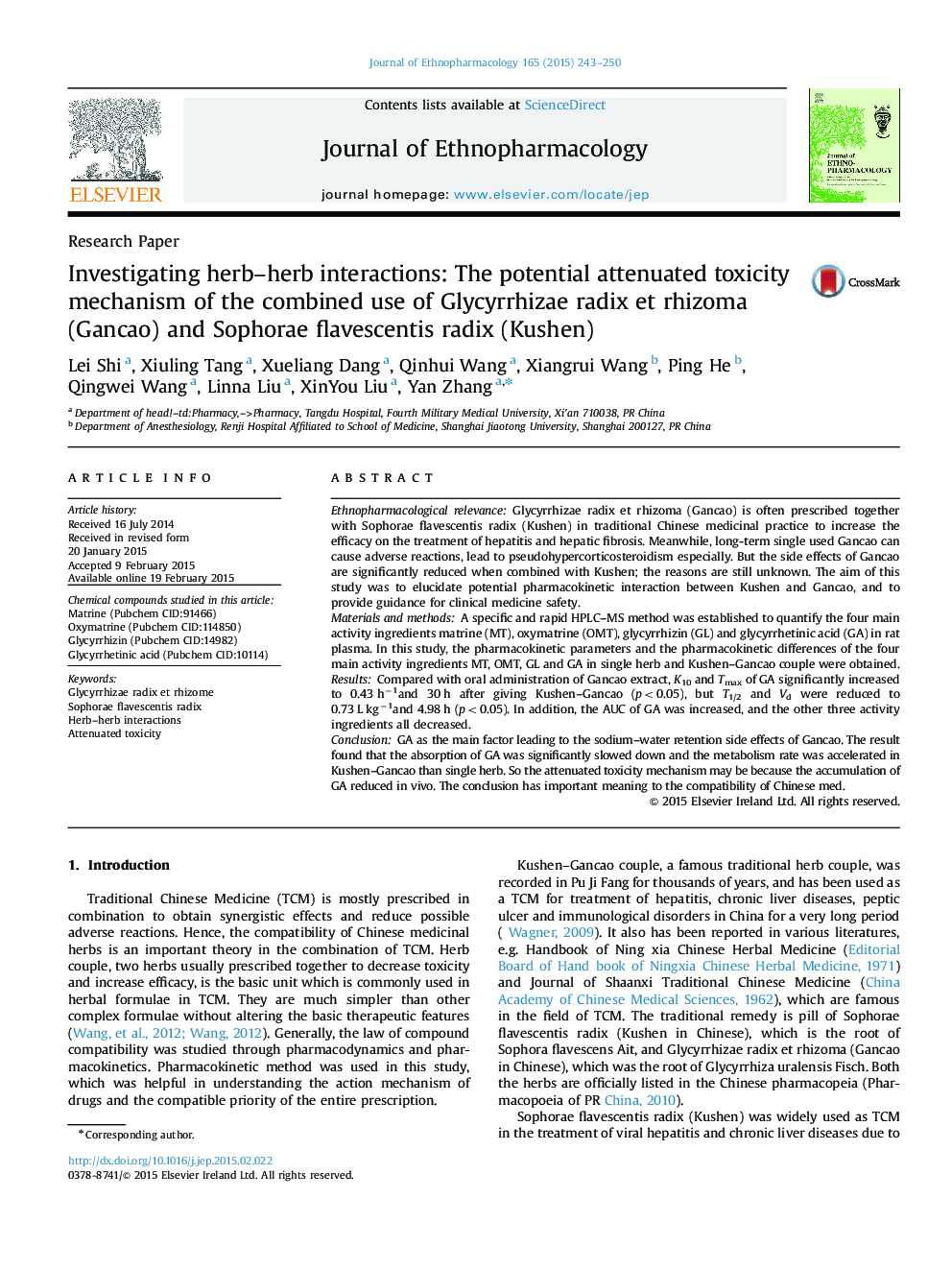| Article ID | Journal | Published Year | Pages | File Type |
|---|---|---|---|---|
| 2545073 | Journal of Ethnopharmacology | 2015 | 8 Pages |
Ethnopharmacological relevanceGlycyrrhizae radix et rhizoma (Gancao) is often prescribed together with Sophorae flavescentis radix (Kushen) in traditional Chinese medicinal practice to increase the efficacy on the treatment of hepatitis and hepatic fibrosis. Meanwhile, long-term single used Gancao can cause adverse reactions, lead to pseudohypercorticosteroidism especially. But the side effects of Gancao are significantly reduced when combined with Kushen; the reasons are still unknown. The aim of this study was to elucidate potential pharmacokinetic interaction between Kushen and Gancao, and to provide guidance for clinical medicine safety.Materials and methodsA specific and rapid HPLC–MS method was established to quantify the four main activity ingredients matrine (MT), oxymatrine (OMT), glycyrrhizin (GL) and glycyrrhetinic acid (GA) in rat plasma. In this study, the pharmacokinetic parameters and the pharmacokinetic differences of the four main activity ingredients MT, OMT, GL and GA in single herb and Kushen–Gancao couple were obtained.ResultsCompared with oral administration of Gancao extract, K10 and Tmax of GA significantly increased to 0.43 h−1and 30 h after giving Kushen–Gancao (p<0.05), but T1/2 and Vd were reduced to 0.73 L kg−1and 4.98 h (p<0.05). In addition, the AUC of GA was increased, and the other three activity ingredients all decreased.ConclusionGA as the main factor leading to the sodium–water retention side effects of Gancao. The result found that the absorption of GA was significantly slowed down and the metabolism rate was accelerated in Kushen–Gancao than single herb. So the attenuated toxicity mechanism may be because the accumulation of GA reduced in vivo. The conclusion has important meaning to the compatibility of Chinese med.
Graphical abstractThe mean plasma concentration–time curves of GA following oral administration of Gancao and Kushen–Gancao aqueous extracts to rats.In pharmacokinetic study, the result showed that combination with Kushen can significantly influence the in vivo metabolism process of Gancao. When combined with Kushen, the absorption process of GA slowed down and the excretion of GA accelerated. This may be the reason why the water–sodium retention side effects of Gancao were decreased when combined with Kushen. Figure optionsDownload full-size imageDownload high-quality image (83 K)Download as PowerPoint slide
